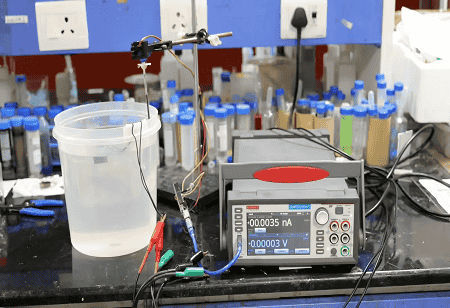
In a major breakthrough, researchers at IIT Guwahati and Ohio State University have developed an innovative underwater vibration sensor for voice recognition, offering a contactless communication alternative for individuals with voice disabilities.
Led by Prof. Uttam Manna (Department of Chemistry) and Prof. Roy P. Paily (Department of Electronics and Electrical Engineering), along with their team of research scholars and collaborators from Ohio State University.
The project tackles a critical gap in current voice recognition systems, which remain largely inaccessible to those with impaired vocal cords.
Unlike conventional microphones, the newly developed sensor does not rely on audible speech. Instead, it detects subtle vibrations in water caused by the exhaled breath during silent speech attempts.
Also Read: IIT Guwahati's Bamboo Composite Set to Revolutionize Auto Interiors
Positioned just below the air-water interface, the device captures these tiny waves and converts them into electrical signals. The system, powered by Convolutional Neural Networks (CNNs), then interprets these patterns into recognizable speech commands.
The sensor is built using a conductive, chemically reactive porous sponge and has shown impressive underwater durability. With a lab prototype costing just ₹3,000, the team is actively exploring industry collaborations to reduce costs and scale production.
Looking ahead, researchers plan to clinically validate the device and expand its dataset by working with individuals with voice disorders. The goal is to refine recognition accuracy and enable seamless interaction with smart devices.
Prof. Manna emphasized the innovation’s significance: “This material design enables voice recognition by monitoring water waves caused by exhaled air—offering a lifeline for those with vocal impairments.”
We use cookies to ensure you get the best experience on our website. Read more...